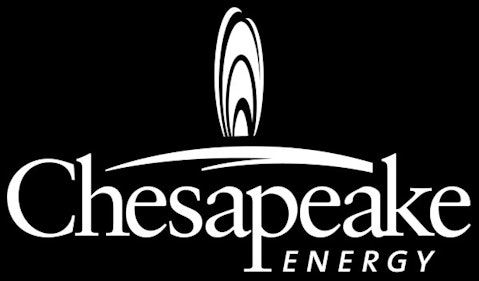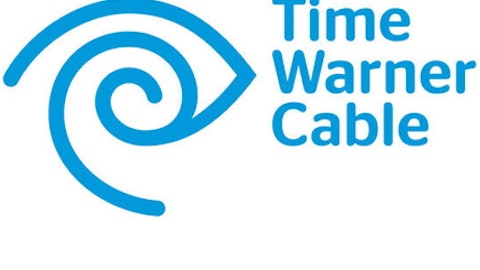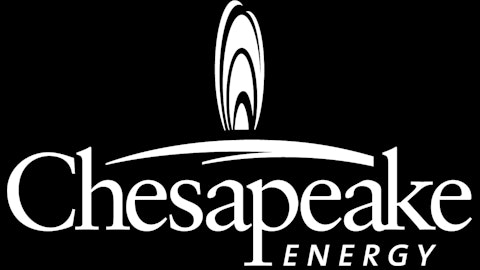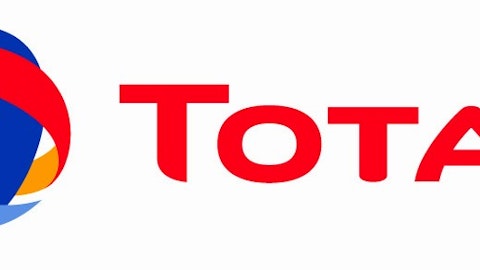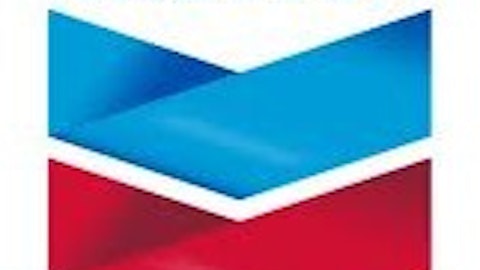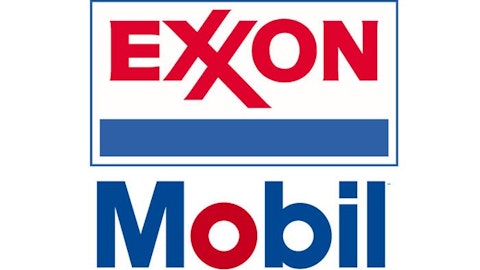Searching for a good dividend stock is straight forward, but it can be easy to gloss over deeper problems. Many people look at a few basic metrics like the dividend yield, the dividend payout ratio and the revenue growth rate, and then create a dividend portfolio. This process ignores the quality of a company’s cash flow, which is very important.
The search process
Many investors look for a stock with a yield around the market average and a payout ratio less than 50. A payout ratio less than 50 means that less than 50% of the cash for the dividend comes from earnings. It is common to throw in growing earnings per share (EPS) and growing revenue to get a good looking dividend growth stock.
The chart below shows how Chesapeake Energy Corporation (NYSE:CHK) was marching along with a healthy payout ratio below 50, until its earnings plummeted and its payout ratio fell like a rock. This energy firm was a natural gas growth play. It looked like an attractive way to ride America’s fracking boom and pick up dividends on the side. Now, its stock price has remained at depressed levels since 2009, and it still has a high total debt to equity ratio of 1.06. Hindsight is 20-20, but was there any simple way to predict Chesapeake’s poor performance?
CHK Payout Ratio TTM data by YCharts
Look at free cash flow
Free cash flow (FCF) isn’t mentioned as commonly as revenues or EPS, but it is a powerful metric that reveals the quality of a company’s earnings. FCF is the cash that a company generates from operations, less capital expenditures. It helps to show how much cash a company can generate from operations, in a sustainable manner.
As the chart below shows, Chesapeake Energy Corporation (NYSE:CHK) has consistently produced negative per share FCF. Given Chesapeake’s business model of buying up as much land as possible and taking on large amounts of debt to drill as many wells as possible, it isn’t surprising that the company hasn’t turned out very well. Chesapeake’s lack of FCF comes with the questionable practices of its former CEO.
CHK Free Cash Flow Per Share TTM data by YCharts
Companies with strong free cash flow and low payout ratios
While Chesapeake Energy Corporation (NYSE:CHK) is a good example of a company with low FCF that is best avoided, Union Pacific (NYSE:UNP) is the opposite. This railroad has maintained a payout ratio around 30 and positive FCF. Its network runs from America’s Midwest to the Pacific Coast. The company has a great value proposition for companies that import and export goods from Asia. The company is in a stable position. The capital and regulatory hurdles required for creating a network that could rival Union Pacific’s are enormous.
With a healthy total debt-to-equity ratio of 0.49 and profit margin of 19.1%, Union Pacific offers a quality dividend.
Time Warner Inc (NYSE:TWX) has seen its stock boom in the past couple years. It has been producing strong FCF per share around $7 and a falling dividend payout ratio currently around 32. The company is facing challenges in its main cable business, as its satellite competitors and the threat of 4G wireless internet loom in the distance. Even with these long term threats, the average American watches television more than 20 hours of television per week. With a yield of 2.5% and positive FCF, Time Warner Cable is another dividend stock to keep an eye on.
Exxon Mobil Corporation (NYSE:XOM) is a famous dividend stock, and with good reason. The company is involved in a number of areas of the energy business to help ensure stable earnings and dividends. Unlike Chesapeake Energy Corporation (NYSE:CHK), it did not place all of its resources on growing as fast as possible. While it continues to enjoy profits from refining cheap US oil, it is also working to replace its reserves by exploring the Gulf of Mexico and Liberia.
Its balance sheet is clean with a total debt to equity ratio of 0.08. In addition to its positive FCF, its return on investment of 27.3% and return on assets of 14.0% show that its 2.8% yield is backed by a profitable operation.
CHK Total Return Price data by YCharts
Conclusion
The payout ratio provides a simple way to evaluate a company’s dividend, but it always pays to take a deeper look. By looking at FCF you can see the quality of a company’s earnings and the sustainability of its operations. Chesapeake Energy Corporation (NYSE:CHK)’s negative FCF makes it obvious that the company is questionable. For long-term investors looking for stable firms, FCF positive companies like ExxonMobil and Union Pacific are better options. Time Warner Cable has a number of challenges ahead due to the growth of the internet and 4G wireless networks, but fundamentally it is a profitable firm with strong free cash flow.
Joshua Bondy has no position in any stocks mentioned. The Motley Fool has the following options: Long Jan 2014 $20 Calls on Chesapeake Energy (NYSE:CHK), Long Jan 2014 $30 Calls on Chesapeake Energy, and Short Jan 2014 $15 Puts on Chesapeake Energy.
The article The Payout Ratio Doesn’t Tell the Whole Story originally appeared on Fool.com.
Copyright © 1995 – 2013 The Motley Fool, LLC. All rights reserved. The Motley Fool has a disclosure policy.
